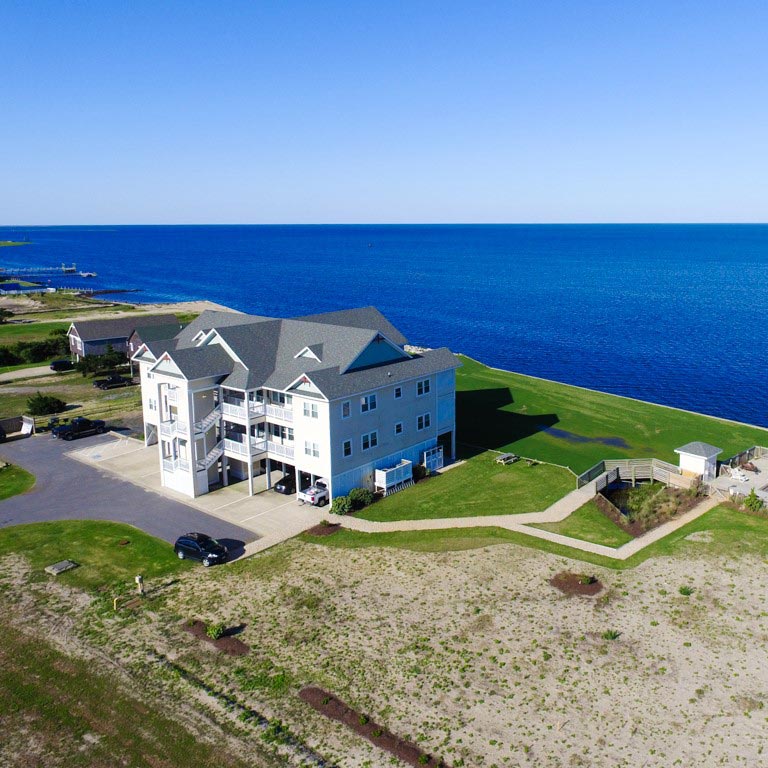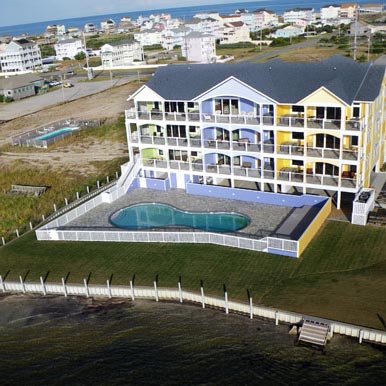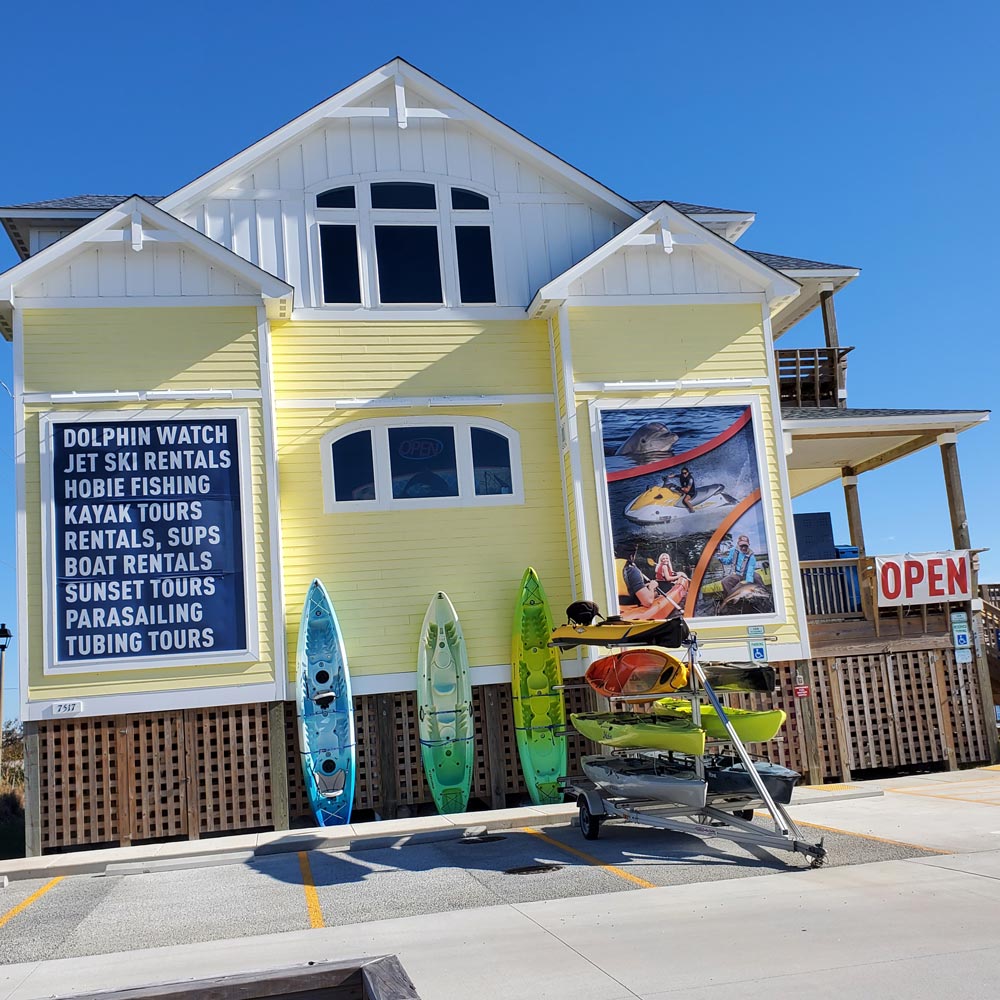Everything You Need to Know About the Outer Banks Sea Turtles
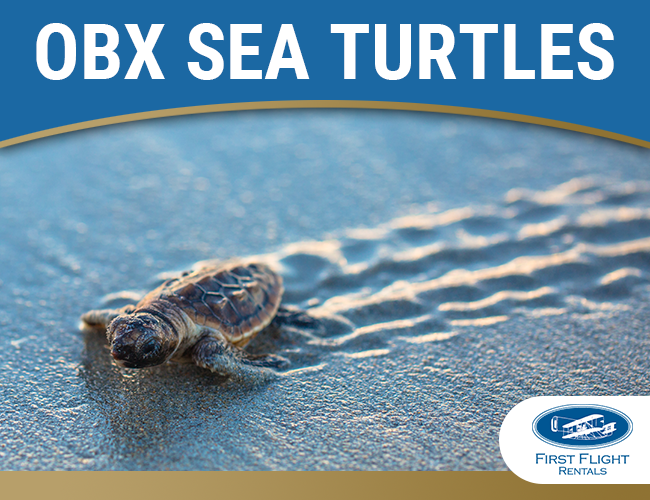
The Outer Banks of North Carolina is known for its open shoreline, beautiful beaches, and some of its unique residents – the Outer Banks sea turtles.
Of the seven sea turtle species in the world, five of them claim the Outer Banks as their home.
- Kemp’s Ridley Turtles, the smallest of the Outer Banks sea turtles, weigh around 75-100 pounds and can be two to three feet long when they are fully grown.
- Hawksbill Turtles average between 100-150 pounds and three feet long as adults.
- Loggerhead Turtles tend to weigh between 200 – 400 pounds and are up to 3.5 feet long.
- Green Sea Turtles can grow to be 200 – 450 pounds and five feet long.
- Leatherback Turtles are the largest of the sea turtles in the Obx. They can weigh over 1,000 pounds and grow up to nine feet long! The largest Leatherback turtle on record was over an astonishing 2,000 pounds.
About the Outer Banks Sea Turtles
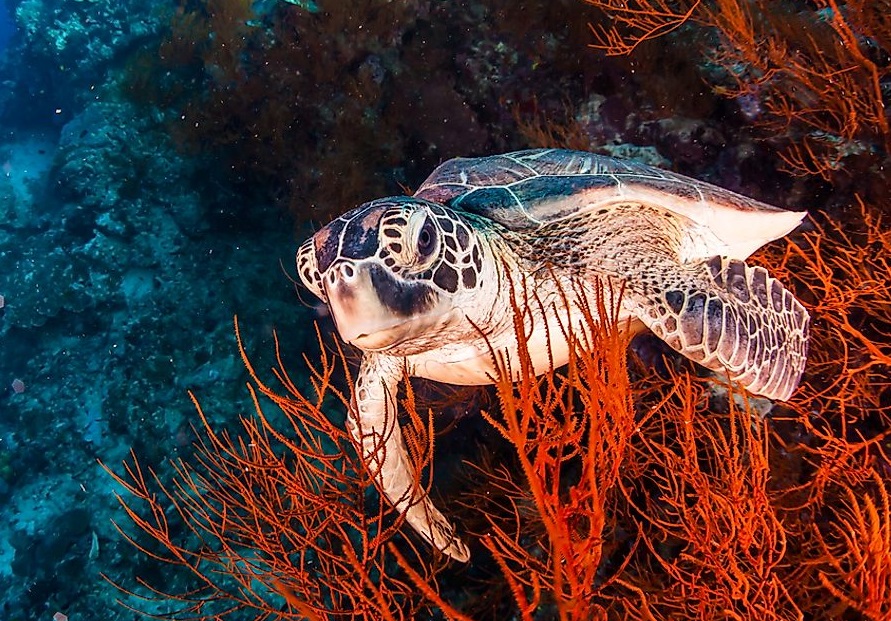
You may be fortunate to find a sea turtle on its way to nest on the sand, or you can visit the Sea Turtle Rescue exhibit at the North Carolina Aquarium on Roanoke Island in Obx.
Although sea turtles swim in the ocean, they breathe in air and need to surface every few hours in order to take a breath. They are cold-blooded reptiles and have an average lifespan of 50-100 years.
The Loggerhead, Kemp’s Ridley, Hawksbill, and Leatherback sea turtles of the Obx are omnivores and primarily eat jellyfish, mollusks, seaweed, algae, and other marine plants. Green Turtles are herbivores whose diet consists of plants and seaweed.
All five species of sea turtles of the Outer Banks are considered endangered species. They get trapped in fishing nets, caught on hooks, and lose their nesting grounds due to tourism and development on the beaches. The turtles are protected by the Endangered Species Act which makes it illegal to capture, bother, or harm the sea turtles.
Nesting on the Outer Banks
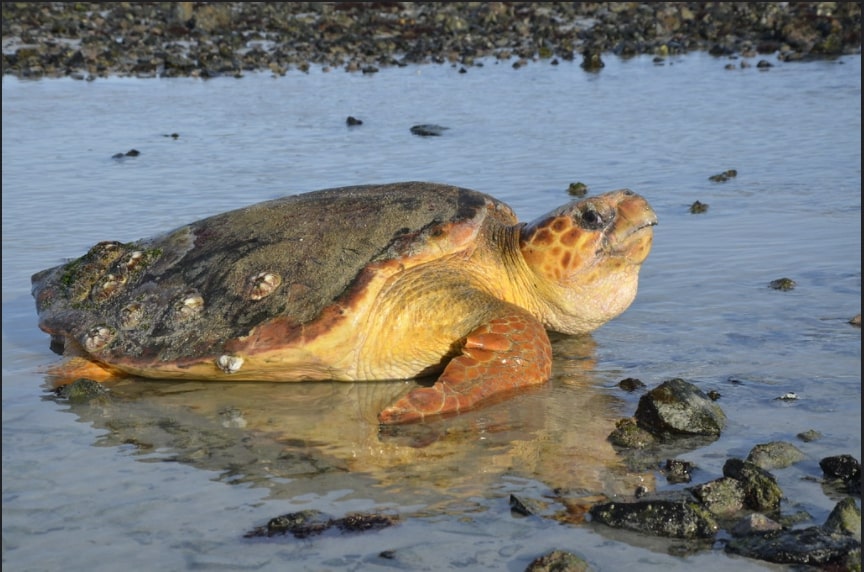
While sea turtles live in the water, the female sea turtles will come to shore when it’s time to lay their eggs, a process known as nesting.
The Leatherback sea turtles will nest on the shores of the Outer Banks during the fall and winter, but the other species nest during the summer months. You can usually find them nesting from May through September when hundreds of sea turtles will leave their home in the ocean and come to shore to lay their eggs. The majority of nesting turtles that you’ll find on the Outer Banks are Loggerheads.
The sea turtles will swim to the shore and make their way up the sand until they are above the tide line before they start digging their nest. They can lay between 50 to 180 eggs in each clutch, or group of eggs.
Most of the sea turtles will nest at night and use the moon to guide them to the shore. The Kemp Ridley sea turtles are an exception and will nest during the day, and often with other turtles. A sea turtle will nest from two to eight times each nesting season.
In an interesting phenomenon, warm sand will result in more female hatchlings and cooler sand yields more male sea turtles.
The sea turtle eggs hatch after approximately 50 days. When the eggs hatch, the hatchlings will make their way back towards the ocean and will spend their first few years growing in seaweed nurseries. Unfortunately, only a small percentage of the baby sea turtles will survive to adulthood.
Sea Turtles in the Wild
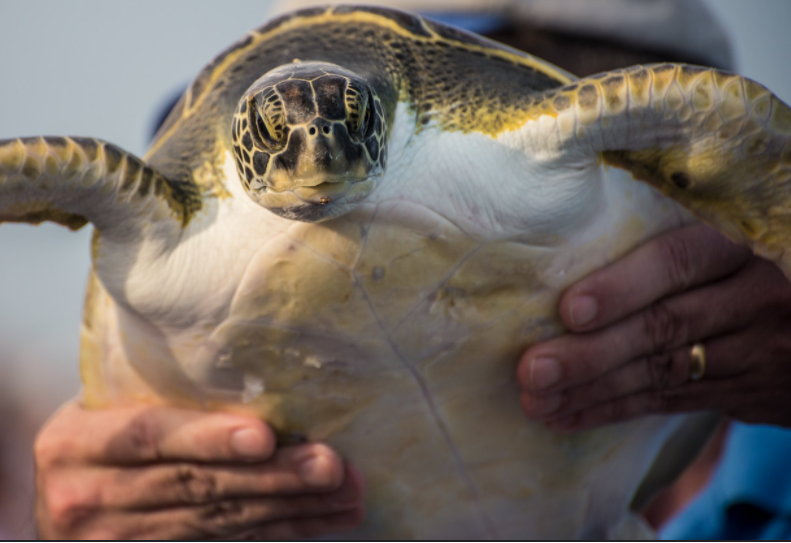
Sea turtles are remarkable creatures with their iconic shells, unique bodies, and ability to live in the water and survive on land.
Sea turtles can stay underwater for up to seven hours before coming up for air. They possess a fascinating ability to slow down the heartbeats in order to conserve their oxygen and prolong the amount of time they can stay underwater. Sea turtles can reduce their heartbeat to once every nine minutes.
Because sea turtles need to breathe air, they can drown in the water. Unfortunately, many sea turtles become trapped in fishing nets and can’t surface to breathe. They can also drown if they are stressed and their heartbeat increases, using up their oxygen levels.
Sea Turtles on the Outer Banks
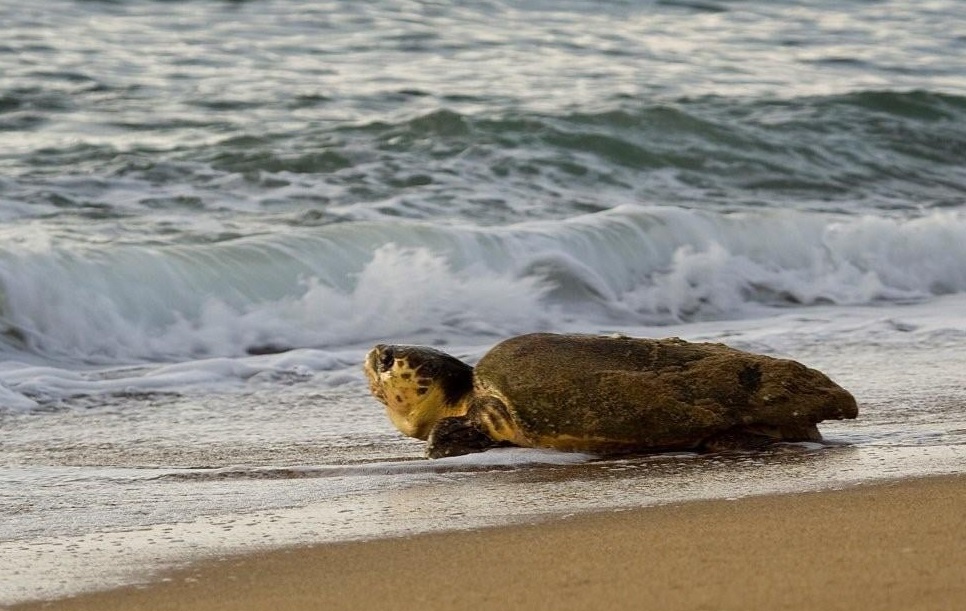
Sea turtles live in the water and only come out to the shore to nest, or if they are sick or injured. If you see a sea turtle, adult or hatchling, on the sand of the Outer Banks, do not touch or disturb it.
The Network for Endangered Sea Turtles (N.E.S.T.), a non-profit organization, patrols the beaches and looks out for the sea turtle nests. If you see a turtle that looks hurt, report it to the N.E.S.T. hotline.
Sometimes you can find a nest of hatchlings making their way back to the water. It’s an incredible sight to observe the dozens of tiny reptiles instinctively moving toward the water.
Posted on 07/20/2021 in Area Information, Things To Do










